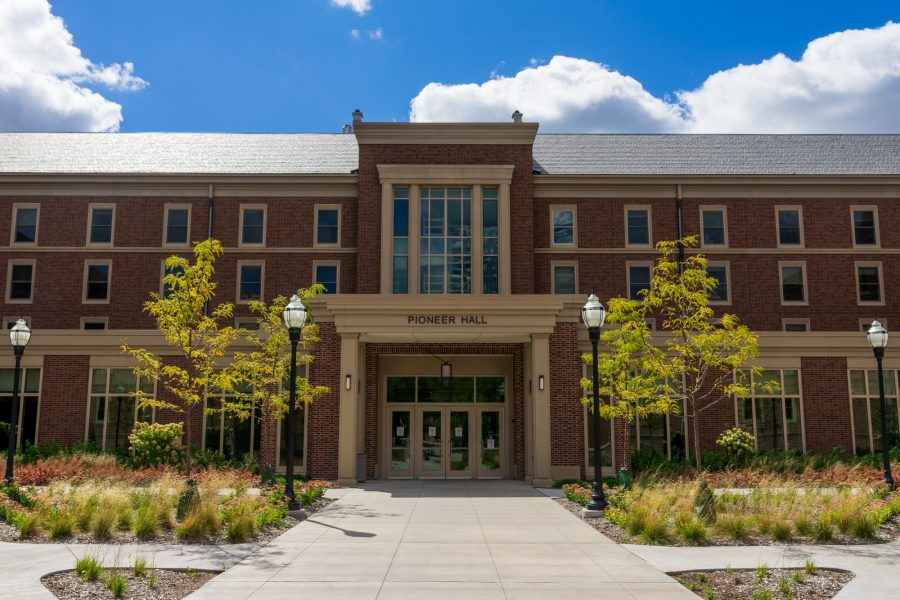Despite the anxieties of future student residents, University of Minnesota Housing and Residential Life is set to open its doors to incoming students two weeks after the start of the fall term.
After months of uncertainty and changing plans, University housing in the Twin Cities will be accepting incoming students starting Sept. 15. This comes after a Board of Regents vote to delay mass move-in due to COVID-19 concerns.
Recently, University President Joan Gabel announced new guidelines for dorm residents, which include a multiple step transition plan into University life in an attempt to limit the spread of the virus.
The transition plan outlines rules dorm-residing students will have to follow, including curfews and limited access to resources on campus. Students who violate these rules may face penalties ranging from warnings to termination of their housing contract.
Inside housing
Several community advisers (CAs) working within University housing say they have not received clear communication or training dealing with COVID-19 disruptions, housing delays, infected residents or changing living standards.
With students already on campus and some residents with special exceptions still moving into University housing, some CAs said that uncertain expectations have created an environment where they do not feel able to live and do their jobs safely or effectively.
“We have no idea what the rules are,” said Jamie*, a CA on campus who wished to remain anonymous due to their ongoing employment status. “Residents are already here, and I don’t see how having them here and then going on lockdown two weeks from now is going to do any good.”
HRL created multiple reopening scenarios for fall that were informed by long-established pandemic plans gathered from what was learned over the last five months by University and state officials, according to a statement from the office.
“Our central leaders and building supervisors are communicating with all current student staff to understand how the delay in residence hall move in may impact their role in this interim period,” the statement said. “We remain committed to advocat[ing] for our student staff who want and/or need to live and work on campus.”
However, several CAs said that even if the University was clear about how they should enforce the Maroon and Gold Sunrise rules, they felt their wellbeing was not prioritized in the planning.
“I do not feel safe at all,” said Alex*, a CA on campus who wished to remain anonymous due to their ongoing employment status. “I really don’t think housing is taking proper precautions to keep both their residents and their staff safe … it’s very unclear what we’re supposed to do.”
Several CAs said they were also uncertain if they would learn if a resident tests positive for COVID-19.
According to the training and communication they received, CAs are notified when they have a resident isolating or quarantining within their designated building. However, if a resident on their floor or in their building is moved elsewhere for isolation or quarantine, they are not automatically considered “close contacts” by the Minnesota Department of Health’s contact tracing guidelines.
Alex* already saw this breakdown in communication occur over the summer when a coworker — who later tested positive for COVID-19 — broke quarantine while awaiting test results.
Several CAs also said they thought that members of University administration have implied that they should not exchange information relating to their testing status so as to not incite panic, despite the close contact many CAs have with others who live in the buildings.
“I really love the University of Minnesota, and I’m really hurt that they don’t seem to love me back,” Jamie* said. “Joan Gabel isn’t the one enforcing these rules. [Provost] Rachel Croson isn’t the one enforcing these rules. The Board of Regents don’t enforce these rules — I do. But none of them seem to understand my position.”
Coming to the University
Kisha Aquino is an incoming first-year student. She was excited to move into Middlebrook Hall before the announcement came out.
“I have everything prepared,” Aquino said. “My items [were] already packed.”
Incoming first-year student Elizabeth Schoenfelder was bound and determined to come to the Twin Cities after the delay announcement. Even though she faced difficulties getting here, she admits that her struggle has been relatively minor considering she only lives a state away in South Dakota.
“We’re facing the repercussions of universities that aren’t even ours yet — of the students making mistakes that have yet to even happen on campus,” she said. “It’s ridiculous to see how much it is impacting other people, because it’s only a minor inconvenience for me.”
Many parents of incoming students are facing the brunt of the uncertainty.
Aquino’s father already took two weeks off from work prior to her expected move-in to try to limit the spread of the virus. Aquino’s mother also expected to take the day off to help her with the transition.
“Money’s kind of big issue right now,” said Aquino. “He took those two weeks off … only to have it called off last minute, a week before we move in.”
Schoenfelder’s parents still wanted her near campus under the new timeline, but are dissatisfied with the University’s direction so far.
“I appreciate their caution regarding [COVID] but their indecision has made this phase so difficult,” said Schoenfelder’s mother, Teresa. “Moving your child to college is such a huge time in all of our lives. No direction, and no timeline made it worse. Regardless of [the University’s] extensive measures, the new plan is totally unrealistic. … It is not feasible.”








